Obviously, birds can hear otherwise there would be no point in them singing such beautiful songs. But how do birds hear when they don’t have any visible ears? You will learn the answer to that question and so much more about bird hearing here in this article.
Birds hear quite well despite not having any visible ears. Their earholes are concealed by small feathers that buffer the sound and protect the ears from the elements. The ear canal in a bird directs sound to the eardrum. Beyond the eardrum, the sound is transmitted to the fluid-filled inner ear.
Read on to discover the incredible way that birds hear the world around them. As with many other physical aspects of birds, their ears are perfectly formed to be aerodynamic and hydrodynamic. Let’s dive into the world of avian hearing.

Bird Ear Design
The design of birds’ ears is yet another brilliant creation of nature. They are perfectly suited to a flying creature, aerodynamic, and sensitive to just the right frequencies.
Birds’ earholes are on the sides of their heads well hidden beneath feathers called ear coverts. They do not have any external parts to their ears as this would create unnecessary drag when they fly.
One bird that has visible earholes is the Emu from Australia. In the image below, you can see the right earhole of this bird, covered with a wispy layer of ear coverts. As Emus do not fly, they do not need their ears to be completely covered.
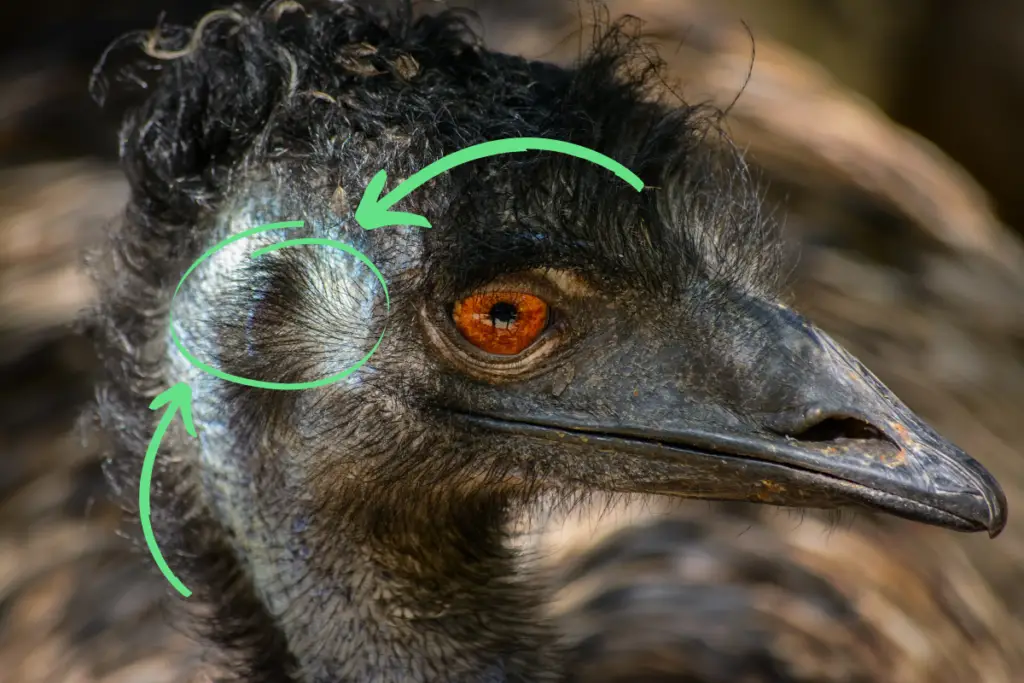
Learn more about the Emu and other flightless birds of Australia in this post on my blog.
The ear canal in birds is very short and leads to the eardrum, also called the tympanic membrane. Beyond this is the small air-filled cavity of the middle ear that opens into the pharynx via the auditory tube.
A piece of cartilage called the extracolumella attaches to the inner surface of the eardrum and transmits sound to the inner ear via a bone called the columella.

In the diagram above, you can see the plica cavemosa. This small muscle passes under the eardrum and attaches to the extracolumella. What it does is restrict the movement of the columella in reaction to loud noises. When a loud noise enters the ear canal, this muscle constricts so that the full force of the sound does not transmit to the middle ear.
The inner ear contains a membranous labyrinth and a bony labyrinth which are both filled with fluid. The bony labyrinth and the cochlea surround the membranous labyrinth which is the first thing to develop in an embryo.
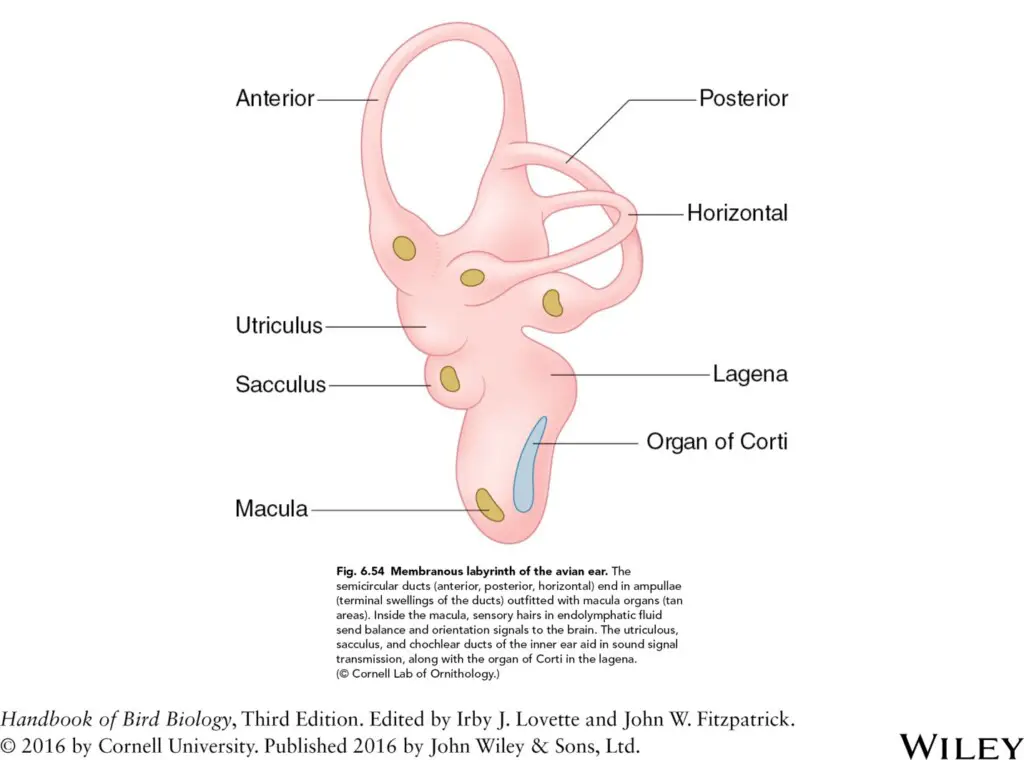
The tan-colored areas on the image above are macula organs. Inside these are patches of sensory hairs that send balance information to the bird’s brain via the vestibulocochlear nerve.
In Fig. 6.53 above, you can see that the columella attaches to the vestibular window. Sound waves transmitted to the columella via the eardrum vibrate the vestibular window which sends pressure waves into the fluid in the cochlea. The cochlea window acts as a damper to relieve pressure inside the inner ear.
Inside the cochlea is the basilar membrane which interprets the sound waves to the brain via the vestibulocochlear nerve.
All of this is a brilliant hearing mechanism not unlike our own. It works in much the same way just with physical differences such as the cochlea for example, which is spiral-shaped in the human ear.

Learn about bird sight in this article here on the site.
How Well Do Birds Hear?
Most birds hear within a similar range to humans. Humans can detect sounds between 20 Hz and 20 kHz. In most birds, the range is around 40 Hz (in Budgerigars) to 29 kHz (in Chaffinches). Many birds can hear well outside of these frequency ranges and discern finer temporal structures of complex sounds.
Some birds can even detect infrasound (sounds below 20Hz). Homing Pigeons for example can hear sounds down to 0.05 Hz and it is thought they may navigate using this sensitive hearing.
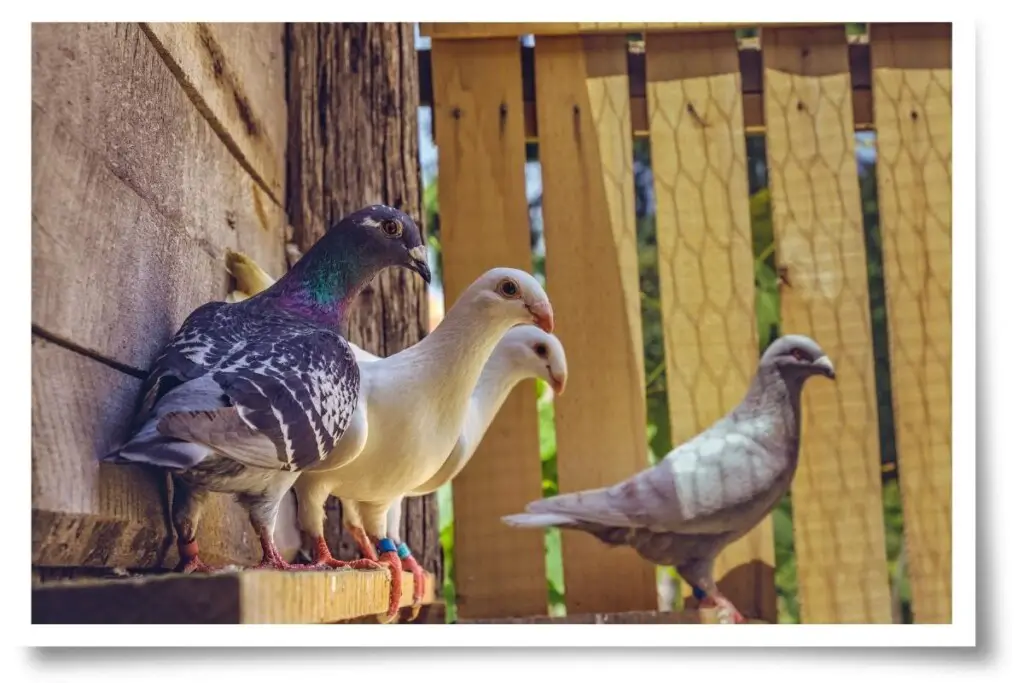
Some birds use infrasound in their mating displays. Several species of grouse do this. The sounds are mostly produced mechanically, not made with the voice.
Amazingly, some birds also use echolocation just like bats! Oilbirds that nest in caves in South America and the southern islands of the Caribbean are one such species. These nocturnal birds utter a series of short sounds that bounce back from the cave walls to inform them of their position.

The Ears Of Water Birds
Have you ever been swimming for a while and moments after exiting the water, realized that your hearing is muffled from the water in your ears? Sometimes it can take a lot of embarrassing jumping and thrashing your head about to get the water out of your ears.
Many bird species spend a lot of their time in or around water. Do they get water in their ears? And what about birds such as Penguins that spend up to 20 minutes underwater?
Before we answer this question, it’s important to take a look at bird feathers and how those of waterbirds differ from terrestrial birds.

Bird feathers stick together kind of like velcro with the help of tiny structures on the edges of them called barbules. These barbules hook together with those of adjacent feathers, creating a wind and water-resistant barrier.
Waterbirds not only have a greater density of feathers but also have more barbules. This means a much better waterproof seal across their entire bodies. The ear coverts of songbirds have a very open structure but those of waterbirds are much denser, creating a more watertight seal over the ear opening.
Studies done on Great Cormorants at the University of Southern Denmark showed that the opening to the ear canal could be closed with very light pressure from two needles. This suggests that waterbirds such as these would be able to open and close their ear openings as needed.

Discover 10 Australian birds that eat fish like the Great Cormorant in this post here on my blog.
Surprisingly, the eyesight of great cormorants is not very good underwater. This suggests that they may use their sense of hearing more than their sight when hunting below the surface.
In the same study at the University of Southern Denmark, scientists theorized that great cormorants may have hearing that is specifically adapted to water. Though their results found no real discernable difference between their hearing sensitivity above and below the water, great cormorants do have special anatomical features in their middle ear.
The structure of the extracolumella in these birds is similar to that of Clawed Frogs and Red-eared Slider turtles, two species that have hearing adapted for the aquatic world.
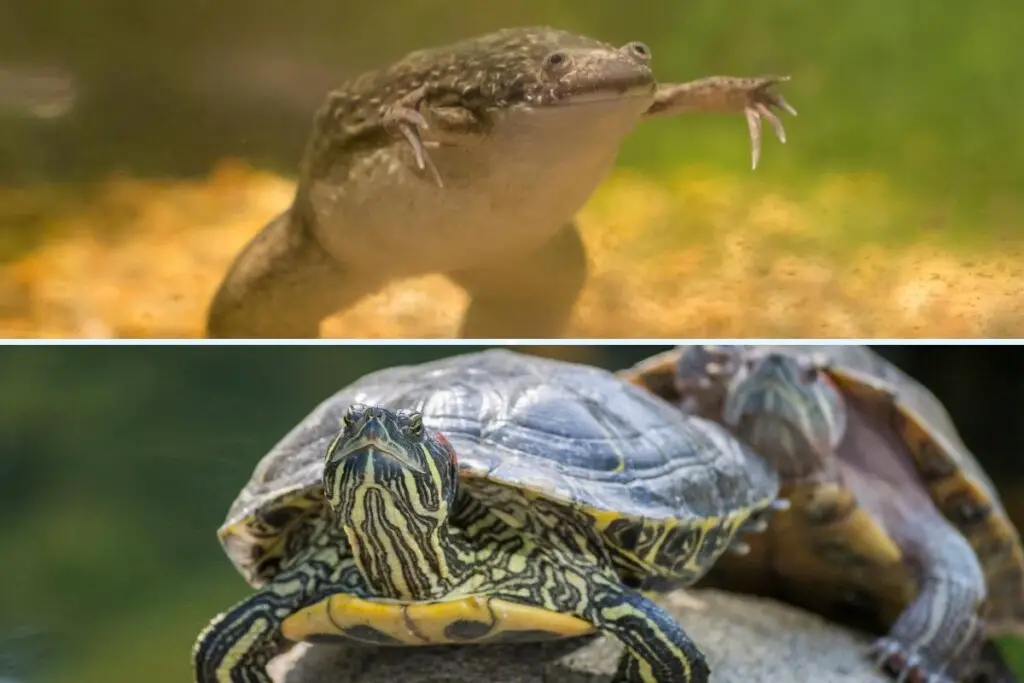
Coping With Underwater Pressure
Another thing you may be familiar with is the pressure exerted on your inner ear when you’re underwater. The deeper you go, the more pressure that you feel deep in your ears. Birds experience this too but it has been discovered that they have special adaptions to deal with it.
According to seaworld.org, the deepest recorded dive of a king penguin was 343 meters (1125 ft). At that depth, the pressure is over 500 pounds per square inch!
King penguins have a special formation of veins in their middle ear called a corpus cavernosum. This can expand and potentially ‘flood’ the middle ear when they dive, equalizing the pressure within the ear.

Other deep-diving bird species may also have this middle ear structure.
The Amazing Ears Of Barn Owls
It is important for birds not simply to hear but to also know what direction the sound is coming from. This is especially important in species such as owls that hunt in the dark.
Having two ears, one on each side of the head is important for sound localization. Any sound coming from the left side of a bird will reach the left ear slightly before the right ear. In addition to this, the sound that reaches the right ear will be slightly dampened by the head of the bird.
These factors combine to send a clear message to a bird’s brain about which direction a sound is coming from and how far away it might be.

The ears of barn owls and other owls are unique in the bird world. These birds catch tiny rodents in complete darkness using audible cues alone. There are a couple of interesting features about their ears that allow them to do this.
Firstly, owls have a facial ruff of feathers that acts like a radar dish, funneling sound towards their ears. Secondly, their ears are asymmetrical; one is higher on the head than the other and one ear canal faces downward while the other faces upward.
This ear design allows them to hear in an almost 3 dimensional way. They can localize sound in both vertical and horizontal dimensions. This gives them a detailed audio map of their surroundings, essentially allowing them to “see” with their ears. This type of auditory system is not exclusive to barn owls, it is found in many owl species.
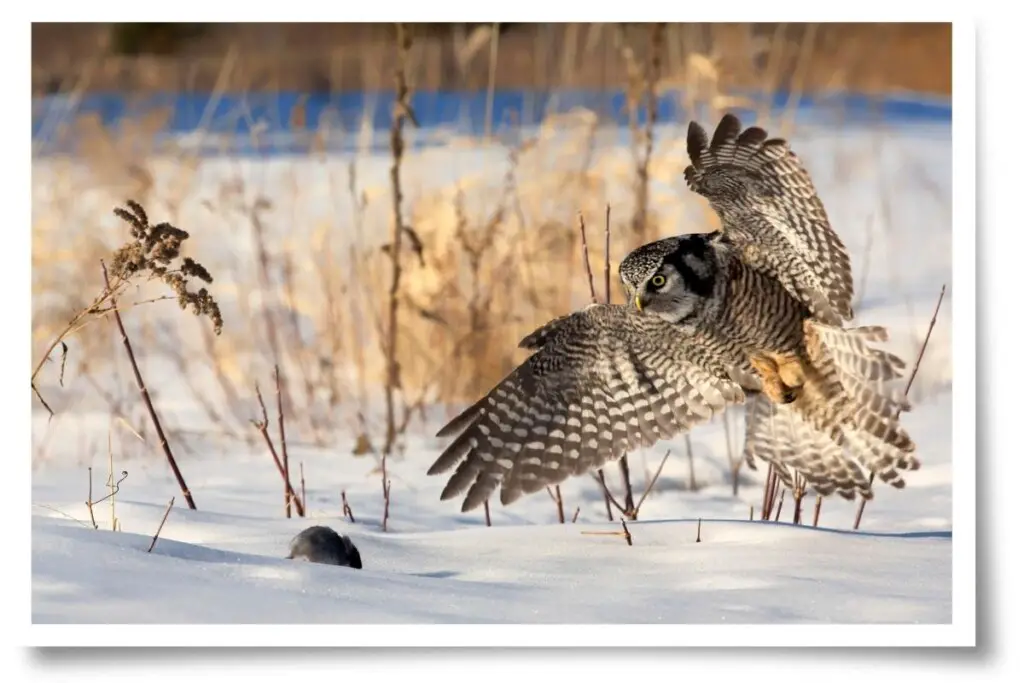
Conclusion
Hopefully, through reading this article you have gained a better understanding of how birds hear. It is incredible how amazingly well they are adapted to their environments. Everything about them, including their hearing, is perfectly suited to where and how they live.
You will find many more articles like this in the Bird Facts category of my blog.
Until next time, always be listening out for birds wherever you go.
References
- Handbook of Bird Biology – The Cornell Lab of Ornithology
- Amphibious hearing in a diving bird, the great cormorant (Phalacrocorax carbo sinensis) – ResearchGate
- Pressure equilibration in the penguin middle ear – PubMed.gov
- Penguins – Smithsonian Institute
- What Actually Makes Water Roll Off a Duck’s Back? – KQED
